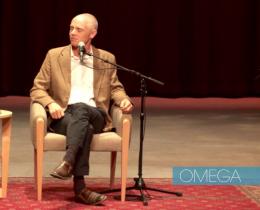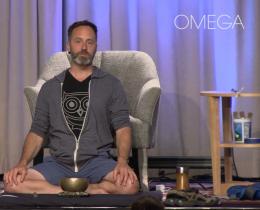Omega: We hear a lot about acceptance as a spiritual practice. How can we accept what is truly horrifying to us, whether it’s a trauma, a tragedy, a person, or even something like the destruction of the planet?
Adyashanti: It's challenging for any human being to accept what's horrifying, what's violent, and what's ugly, but it goes back to one of the central tenets of everything I teach, which is to let everything be as it is.
But this acceptance is not the endpoint. Letting everything be as it is, or accepting everything we see in the world, doesn't mean not being horrified by it or not having any feelings about it. It’s about having the capacity in our heart and our mind to let it in.
It’s a challenge to see violence and open our hearts and minds to really feel it. But if we can do that, there can be a response that comes out of that willingness. Otherwise our response comes out of conflict.
Often when we feel horrified, it really means we're encountering our love. If we had no love, we wouldn't be horrified. If we didn't care deeply, we wouldn't be horrified. When you feel this way, check in and connect with your love. When you embrace this feeling from the heart, you can then see how you might contribute from a heartful place rather than a place of conflict.
And if you do feel conflict, then that can be included in your heartful embrace, too. Can you be willing to let all the feelings into yourself? And then what kind of response comes out of that? To me this is the only way to find a creative and compassionate way of being with some of the real challenges that are all around us in life.
Omega: What is the difference between attention and awareness? How can we use them to accept what is?
Adyashanti: There is mindfulness and there is attention. What we often hear being referred to as mindfulness is a creative use of attention, so it isn’t wandering all over the place. Attention is like using a flashlight—it's directional. With mindfulness you put it on something specific, like eating or walking, as a way to enter the present moment. It’s a legitimate way of being more here.
And then there's awareness. Mindfulness and awareness are essentially working with the same thing, but awareness just is. It's there before we do anything with it. In this moment awareness is fully functional. It's happening. The fact that you can feel, see, taste, and hear right now wouldn’t be possible without awareness. Awareness is more global. It’s not a focusing down, like attention—it’s the natural state of being completely open.
Mindfulness usually takes some intention and focus, whereas awareness takes just the intention to acknowledge that awareness is. If you say that and then be still, you can feel the field of awareness. Within that field you can focus and pay attention to your breath or to walking or driving or eating. So it’s not that mindfulness and awareness are two things; it’s that awareness is vast and global and always there, while mindfulness is a way of directing that awareness to a moment or experience. Often mindfulness is used as a doorway into awareness.
Mindfulness usually has a sense of “me” being mindful. In the acknowledgment that awareness is, and taking the moment to feel the presence of it, there's not as much of a sense of “me” doing it. It's not nearly as heavy or as dense. It's just a simple acknowledgment and then sensing the presence of it.
Ultimately it’s not two different things; it’s just awareness being a little focused and relaxing. When awareness is relaxed it isn’t focused, but there is attentiveness. It’s like awareness becomes conscious or self-aware. Every moment of our conscious life is awareness, but we can go through an entire lifetime where awareness is never conscious of itself because it's always conscious of what's in the field of awareness.
Part of spirituality is that awareness becomes conscious of itself. That seems like a small little shift, but it actually opens a door of immense possibilities, just that little thing of awareness recognizing itself. It has immense consequences, including giving us the way to accept everything as it is.
Omega: It sounds like different meditation practices focus on attention or awareness. Are they both useful?
Adyashanti: Yes, there are many practices where you focus the awareness and become mindful of something in particular, like the breath. It’s not so much a concentration as a focusing. And then the aperture can relax and get vast, and then you’re in the field of awareness. These are two styles of meditation, and they both have their strengths and weaknesses. I tend to focus a little bit more on the field because it's naturally occurring and it doesn't take the “me” to focus it. But they can both be important.
Even when we're not meditating, to some extent we're utilizing these often without even knowing it. When you concentrate a little bit on anything, you're bringing some amount of mindfulness to it, and then when you're having those moments where, for example, you're walking on the beach or laying on the grass on a warm sunny day where you just kind of let your sense of being open, in essence, you're touching upon the field of awareness a bit more.
We naturally move back and forth between these two states during the day, but something very transformative can happen when we bring an awareness to them. When there's a consciousness about what's happening, when we bring consciousness to the whole process, that's the transformative element.



